October 26, 2022:
Animal Abuse at Miami Seaquarium!
A newly released USDA report from July 2022 has documented food deprivation & animal neglect at Miami Seaquarium.
Here’s a summary of what was found:
– Diets for 9 bottlenose dolphins at Dolphin Harbor were cut by 60-75% overnight for several months
– Cobalt, a 12-year-old male dolphin, dropped 104 lbs in the span of 12 weeks
– The other 8 dolphins lost anywhere from 9-63 lbs
– Seaquarium’s veterinarians were not consulted about reducing the dolphins food intake
– Abnormal & aggressive behaviors from the dolphins increased after their base diets were cut
– Trainers & guests were mouthed, bitten & attacked by the dolphins more frequently
– Aries, a 20-year-old male dolphin, was noted to have a severe increase in regurgitation between 02/23-07/02
– Guest interaction programs were increased & moved to areas where the dolphins had no sun protection.
These findings are appalling. To make matters worse, the reason as to why the dolphins had their base diets cut was “for the purpose of ensuring the animals performed for the guest interactions.” In other words, they were starving their dolphins so they could force them to do tricks for the sake of profit. The Animal Care Specialist Manager even fought back against increasing the dolphins diet to normal out of fear they would not perform for the public.
Miami Seaquarium does not deserve their animals. They’ve had a lengthy history of mistreatment towards their dolphins in the past as well as other animals in their care – including Tokitae the orca. Please, don’t go to Miami Seaquarium & spread the word about their abusive treatment towards the animals in their “care”. (@bornto.bewild)
October 15, 2022:
Exciting news for Tokitae (aka Lolita)! Nearly two weeks ago, Miami Seaquarium posted online that Tokitae’s health was once again on the decline. However, in recent days, her appetite has increased, she’s more active & engaging with her caretakers. Additionally, Friends of Lolita have announced that The Dolphin Company, the owners of Miami Seaquarium, is partnering with them to potentially have Tokitae moved to a sea sanctuary in the Salish Sea (@bornto.bewild).
October 6, 2022:
A documentary crew from the BBC, filming off the east coast of Russia for the David Attenborough series “Frozen Planet II” has captured video of one of the orcas who was rescued from the infamous “whale jail” and returned to the ocean three years ago.
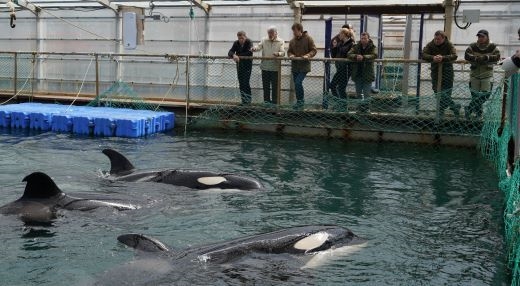
WHALE AID RUSSIA was the largest whale rescue program in history. Organized by the Whale Sanctuary Project in 2019 as one of our Whale Aid programs, it led to the release of 97 whales who were being held in pens on Russia’s far east coast. The plans of their captors had been to sell the whales to marine entertainment parks in China.
Instead, in a remarkable cooperative effort by the Whale Sanctuary Project, Russian nonprofit groups, international advisors and the Russian government, all 10 orcas and 87 beluga whales were rehabilitated and returned to their ocean home.
Grigory Tsidulko, who had been a member of the Whale Aid rescue team, was now a member of the BBC film crew. When he noticed that one of the orcas was wearing a tag, he took more photos and concluded that visual identifiers on her body are a clear match to a photo of Zina that was taken at the whale jail.
We don’t know whether the pod she is with is her original family or a new family that has adopted her. Either way, she is clearly integrated with them and living as a free wild whale in the ocean – where she belongs! (@whalesanctuaryproject)
September 23, 2022:
The cause of death for the two most recent orcas to die in captivity, Nakai & Kohana, have been revealed. Nakai, a male orca who was kept at SeaWorld San Diego, died of a lung disease. Kohana, a female orca who was kept at Loro Parque, died of cardiac malformation. Both whales perished at just 20-years-old.
September 15, 2022:
Loro Parque in Tenerife, Spain, have announced the death of their 20-year-old killer whale, Kohana. In their statement, Loro Parque did not specify when Kohana died, or identify a probable cause, only that she was suffering from “health issues that were identified by our experts some time ago” (suggesting a chronic illness) yet contradict themselves by calling her death “sudden”. Kohana is the third orca to lose her life at the park in the past 18 months, following the deaths of 2-year-old Ula and 17-year-old Skyla last year.
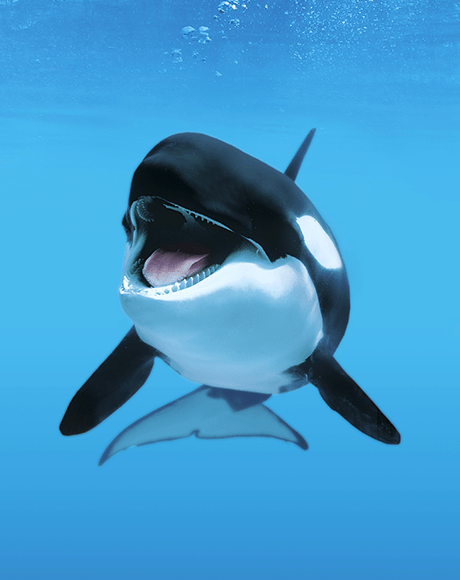
Kohana, born at SeaWorld San Diego, and the second orca calf to be born as a result of artificial insemination, is also an offspring of “#Tilikum“, the famous male orca featured in the anti-captivity film “#Blackfish.” Separated from her mother at less than four years old to be sent on breeding loan to Loro Parque (resulting in the rejection of both her future calves), Kohana’s short time on this earth strongly represents the all-to-common tumultuous life of a captive orca, in the profiteering marine park entertainment industry.
Kohana died in the prime of her life, spending much of it without the love and support of a maternal family. She worked hard to wow crowds during thousands of performances to live her life inside a glorified concrete box. How many more whales have to die before captivity supporters realise these animals are not suitable for captivity?
Rest in peace, Kohana.
You will be sorely missed.
August 10, 2022:
The captivity of whales in the United States could be coming to an end!
A bill has been introduced into the United States Congress to prevent the future capture and breeding of whales for public display and thus, over time, to end the exploitation of whales in entertainment parks and aquariums.
The Strengthening Welfare in Marine Settings (SWIMS) Act would amend the Marine Mammal Protection Act of 1972 to prohibit the taking, importation, or exportation of orcas, belugas, pilot whales and false killer whales for the purpose of public display. It further amends the Animal Welfare Act to prohibit any breeding of these species for future public display.
The bill also specifically allows exemptions for animals being transported to a sanctuary setting or released to the wild.
The SWIMS Act was introduced by Reps. Adam Schiff (D-Calif), Jared Huffman (D-Calif.), Suzan DelBene (D- Wash.) and Senator Dianne Feinstein (D-Calif.) and is co-sponsored by Reps Carolyn B. Maloney (D-N.Y.), Rick Larsen (D-Wash.), Steve Cohen (D-Tenn.), Tony Cárdenas (D-Calif.), and Alan Lowenthal (D-Calif.).
“Whales are among the most intelligent, fascinating, and beautiful creatures in the world,” said Rep. Schiff. “And they deserve to live freely in their natural habitats – not in captivity where their lives are defined by the four walls of a concrete tank.” (@whalesanctuaryproject)
August 6, 2022:
BREAKING: SeaWorld San Diego announced yesterday that Nakai, their 20-year-old male orca, died on August 4th, 2022. According to a park statement, Nakai was being treated for an infection, with “every attempt made to save his life”. Nakai’s death follows that of his niece Amaya in August of last year. There are now 8 remaining orcas at the San Diego park.
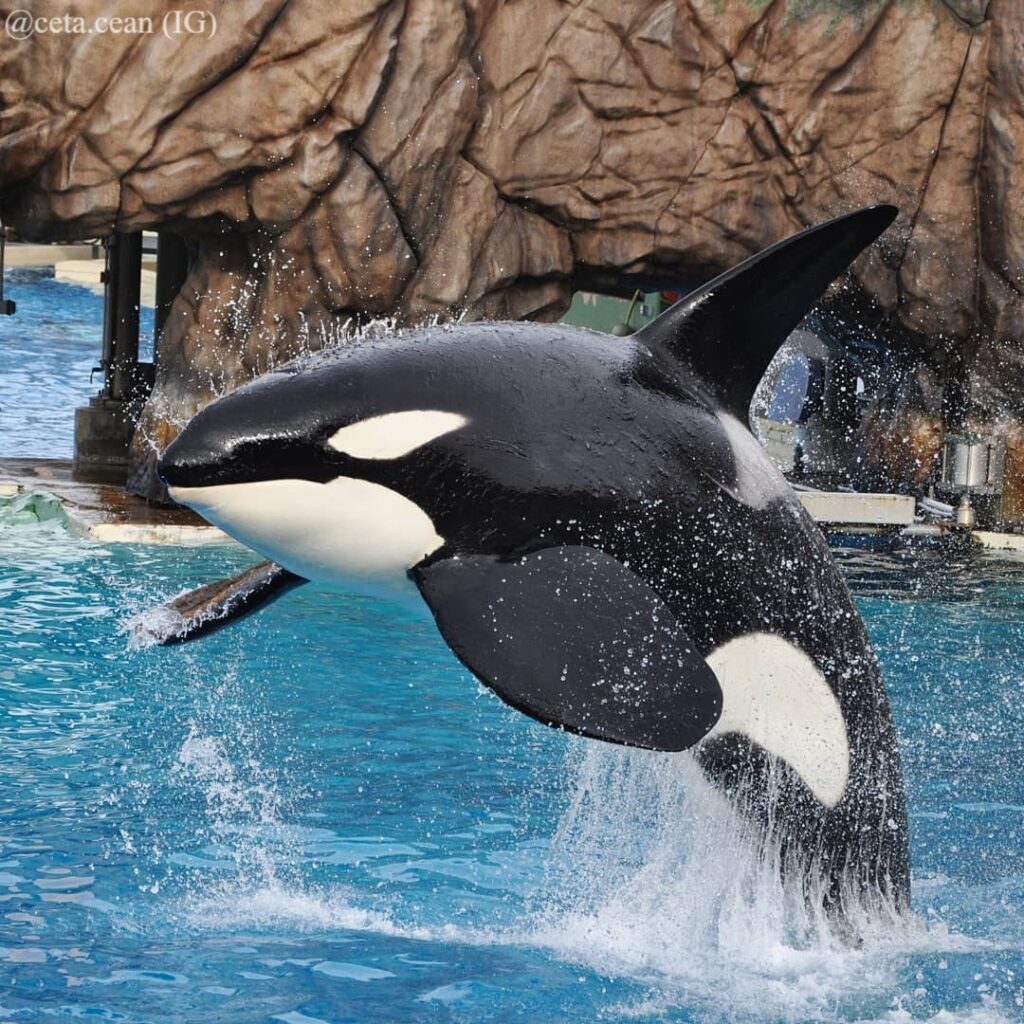
Nakai was born at SeaWorld San Diego on September 1st, 2001. He was the first orca to be successfully born via artificial insemination. His mother was Kasatka & his father was Tilikum, who resided at SeaWorld Orlando. He spent the first 16 years of his life beside his mother. He witnessed the births of his two younger siblings, Kalia & Makani, as well as his niece Amaya in 2014. Unfortunately, on August 15th, 2017, Kasatka passed away & four years later, on August 19th, 2021, Amaya followed. Now, just weeks away from the anniversaries of his relatives deaths, Nakai has perished as well.
One of the major SeaWorld scandals Nakai was involved with took place in 2012 when he was 11-years-old. After having a fight with two other captive male orcas, Nakai had a portion of his chin ripped off. The wound was so horrific it exposed a part of his jawbone. His injury did eventually heal but it left a permanent scar.
Nakai was forced to live two decades within the confines of captivity, not even making it to the average lifespan for a male orca – 30-35 years.
Rest in peace Nakai, we will never forget you. (@bornto.bewild + @end__speciesism)
June 20, 2022:
Over the last few days, some new video footage of Kiska, the lone orca at Marineland Canada, has been circulating online. The video shows what appears to be a white spot on her rostrum (nose) and has been giving rise to speculation as to what it might be. Another circulating video shows lesions on her flukes. Maybe a health issue, maybe nothing of significance? We simply don’t know.
What we do know, however, is that the essential first step in determining the best future for Kiska – and indeed for any captive orca – is a complete evaluation of her physical and mental health and behaviour by qualified, independent veterinarians. This is not just some academic exercise; it is a crucial first step.
Last year, Marineland transferred five beluga whales to the Mystic Aquarium in Connecticut. Two of them died and a third was in critical condition for months. Right now, no one outside of Marineland knows anything concrete about Kiska’s medical condition. Only when we have a full understanding of that can any responsible decisions be made for her future.
Last year, the Whale Sanctuary Project were pleased to begin preliminary discussions with Marineland regarding Kiska’s future. Meanwhile, with your help, the Whale Sanctuary Project is pressing ahead with establishing a sanctuary in Nova Scotia for captive whales. (@whalesanctuaryproject)
June 4, 2022:
Sacred Sea (@oursacredsea) has announced that Sk’aliCh’elh-tenaut (Tokitae / Lolita) has had her health assessed by two independent veterinarians and the report is now available. The assessment was carried out by James McBain, DVM retired, and Stephanie Norman, DVM, PhD.

The assessment was carried out on May 13 and 14, 2022, where a health and welfare assessment was conducted. Medical and behaviour records from 2016-present were reviewed which included the various medications Toki is on.
During the two days Toki’s behaviour was observed during enrichment sessions and while she was not engaged in enrichment sessions.
Most notably, Toki was suffering from an acute illness beginning in late December 2021 to March 2022, described as a “serious health event”. Bloodwork results showed the illness and subsequent recovery but didn’t specifically reveal the cause of her illness.
Toki is now recovering from her illness and remains on appropriate medications. Tokitae also suffers from low-grade chronic anemia. Tokitae’s health will continued to be monitored and on-site assessments will be carried out on a regular basis. (@end__speciesism)
June 2, 2022:
To commemorate Children’s Day, Shanghai Haichang Ocean Park has finally announced the birth of an orca. The male calf was born on September 10, 2021, at 1:16 am (Beijing Time). He was born to first time parents Cookie & Fattiger (aka Dillon). Unfortunately, the calf had to be hand-raised by staff almost immediately after he was born. Cookie, his mother, failed to nurse & bond with him properly.
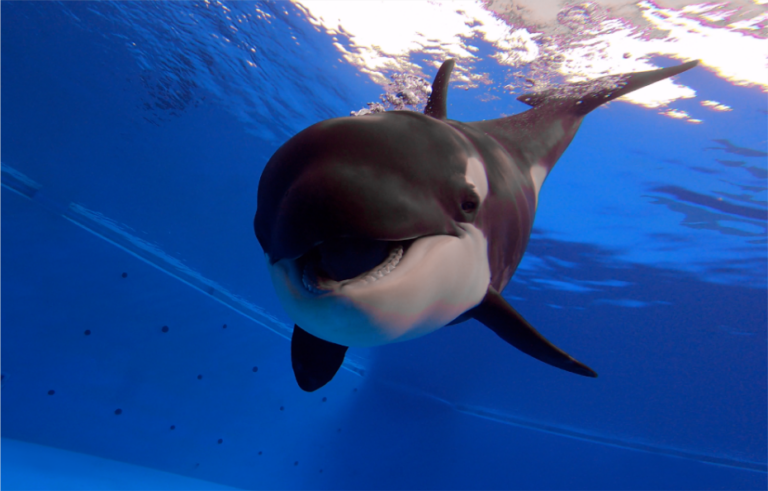
At birth he weighed about 233 kilograms & measured 2.5 meters long. After almost nine months, the calf now weighs about 411 kilograms & measures 3 meters long. The calf is described as healthy and spends everyday with his trainers enjoying enrichment activities. The park is holding a contest on WeChat where users can submit name ideas for the calf. The winning name will be announced on June 16th.
While the announcement of this calf may be exciting it is also a grim reminder of the past and future of Shanghai’s captive orcas. With the exception of the male calf, all orcas at the park were captured from the wild between the ages of 3-7 years old. At this age, they would have still been dependent on their mother’s knowledge on survival and their pod’s culture. It’s tragic they were ripped away from their families, and as a result of not having her mother’s guidance, Cookie rejected her first offspring. Unfortunately, this instance of a mother rejecting her calf will likely be the first of many. (@bornto.bewild / @chinaorcanews)
March 28, 2022:
On 9 September 2021, a calf was born to Cookie, a female orca captured in the Sea of Okhotsk and held for display at Shanghai Haichang Ocean Park. An anonymous video, shared with China Cetacean Alliance, showed the moment this calf was born. Immediately after birth, the calf darted away from Cookie and nearly collided with the tank’s acrylic observation window. The calf then surfaced for air after 20 seconds and started to swim all over the tank, quite erratically. Cookie swam gently after her calf and stayed close to the surface but the two never seemed to properly bond.

In the short video, there was no sign of bonding behaviour. Later, one source told CCA that Cookie did not bond well with the calf and never nursed. The park then decided to bottle-feed the calf. Since then, the calf has been kept in the medical pool, with the water no deeper than 1m. Trainers had to manually milk Cookie and then feed the calf with formula as well.
The calf was still kept in the medical pool on 21 January 2022. Sources confirmed to CCA that the calf was kept alone since Day 1, as management felt this made it easier for trainers to intervene and keep the calf alive.
A netizen posted a photograph of a gift box that contained two orca calf pins on 7 February 2022. CCA is still trying to confirm with the source if Shanghai Haichang Ocean Park is planning to exhibit the orca calf in the near future.
Shanghai Haichang Ocean Park is currently closed due to COVID, and an opening date has not been decided yet. (@chinacetaceanalliance)
March 26, 2022:
Tokitae/Lolita WILL receive an independent medical evaluation by a third-party vet. @mayordlc said ‘We look forward to sharing that updated once the evaluation is complete’, Mayor Daniella Levine Cava also expressed her thanks to Tokitae’s supporters, saying, ‘I am also personally grateful to every person around the world who has advocated for the care and wellbeing of Lolita, including @commissionerregalado whose continued advocacy has helped makes this moment possible’.
We still don’t know if @thedolphinco will release Tokitae to a sea sanctuary, but this feels like a positive step towards a level of transparency surrounding Tokitae that we’ve previously not seen. (@mediabymads)
February 8, 2022:
Lolita, Miami Seaquarium’s 55-year-old orca, is reportedly gravely ill. She began showing signs of pneumonia in January and her health has failed to make much improvement. The stadium Lolita has been performing in for over five decades has been closed off to the public for months so unfortunately we are unable to get a view on her current physical condition.
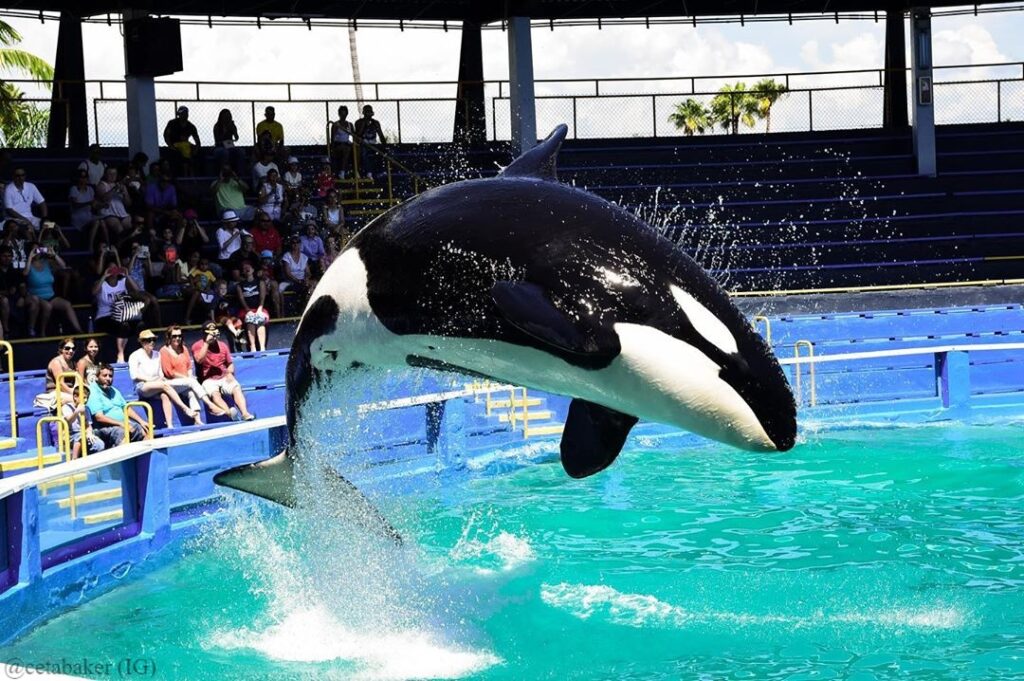
Lolita is a wild-caught orca who was captured on August 8th, 1970, at Penn Cove, Washington. She was transported to Miami Seaquarium and has remained there since then. When she arrived at the park Lolita was introduced to the only other orca Seaquarium owned – Hugo. Tragically, Hugo had a habit of self-mutilating by slamming himself against the concrete walls of the tank. He eventually died in March 1980 of a brain aneurysm and Lolita has never seen another orca since then.
Activists have been protesting against Lolita’s disbecable living conditions for decades now. However, The Dolphin Company, Miami Seaquarium’s new management, have expressed their desire to improve Lolita’s quality of life and have even voiced interest in retiring her to a sea sanctuary. Let’s hope she will make a full recovery so she can eventually be retired from her abysmally tiny concrete tank to a much larger and environmentally stimulating sea-pen! (@bornto.bewild).
January 11, 2022:
Making endless circles in an illegally-sized tank while her family still roams the ocean, is the depressing 52-year reality of Miami Seaquarium’s “Lolita.”
There is hope for her. Miami Seaquarium’s new management, Mexico-based The Dolphin Company, has pledged their commitment to improving Tokitae’s living conditions, even expressing their willingness to consider the option of retiring her to a Sea Sanctuary and work with the organizations trying to make this a reality. After everything she has been though, she is 100% deserving of a better life, no matter where that may be.
Over $21,000 dollars has so far been donated and secured to help Tokitae and the Lummi, (tribal nation tied to the Southern Residents and the Salish Sea) raise funds to begin this journey. To learn more, click here. (@orcarescues)
January 6, 2022:
Drone footage provided by @chinacetaceanalliance (CCA) shows Cookie’s almost four-month-old calf, alive, in the smallest backstage tank at Shanghai Haichang Ocean Park in China. Cookie is believed to have given birth on September 9th, 2021, to a calf of unknown sex and sire. According to CCA, Cookie struggled to establish a bond with the calf – not an uncommon occurrence with first-time captive mothers – and failed to successfully nurse her calf, resulting in staff separating the pair and hand-rearing the youngster.
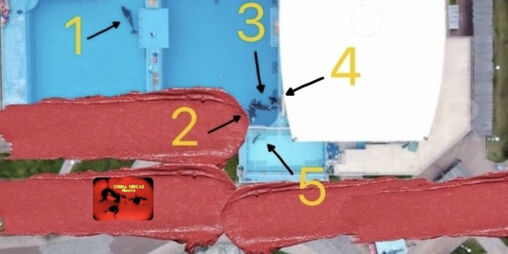
This is the first public picture available of the calf, who’s existence has been speculative up until this point. In the months leading up to the birth we speculated Cookie was pregnant as she had been taken out of shows and appeared much rounder than her tank mates, despite being the youngest and smallest orca at the park. Photos of Cookie taken in September showed she had a swollen abdomen and mammary area which are indications of a recent birth.
All of Shanghai Haichang Ocean Park’s orcas, with the exception of the calf, were captured from Russian waters in 2015. Cookie, Dora, Dylan, and Sean have been publicly exploited by Shanghai Ocean Park since it’s opening in November 2018. The birth of a calf, while disappointing, is not surprising. Unfortunately, the only life this baby will know is that of the four walls of Shanghai’s barren concrete tanks. (@end__speciesism / @bornto.bewild)